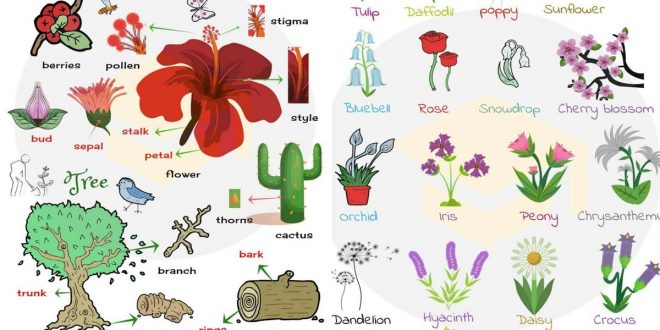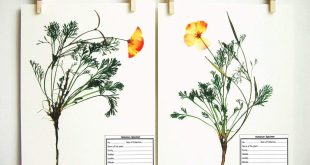Before starting the detailed discussion first I simply answer the first arising question what is author citation? In a sense of Botany, every living being has a unique botanical name by which it is recognized (i.e.Mango=Mangifera indica, Jackfruit=Artocarpus heterophyllus), if it does not have any then it will have sooner or later. These unique names are maintained, by the International Code of Nomenclature for algae, fungi, and plants (ICN). Who first published the name of the organism validly, his or their name also cited besides the botanical name in abbreviated form (i.e.Mango=Mangifera indica L., Jackfruit=Artocarpus heterophyllus Lam.) to make the name complete, accurate and readily verifiable. This naming trend is known as the author citation.
There is a large author’s abbreviated name list but some well-known author names and abbreviated form are given below:
Best safe and secure cloud storage with password protection
Get Envato Elements, Prime Video, Hotstar and Netflix For Free
Best Money Earning Website 100$ Day
#1 Top ranking article submission website
| Carolus Linnaeus | L. |
| George Bentham, | Benth. |
| Joseph Dalton Hooker | Hook.f. |
| A. P. de Candolle, | DC. |
| Robert Brown, | R. Br. |
| William Hooker, | Hook. |
| J. P. Lamarck, | Lam. |
| Nathaniel Wallich | Wall. |
| Carl Ludwig von Willdenow | Willd. |
| George Arnott Walker | Arn. |
| William Roxburgh | Roxb. |
Now, how we cite the name of the author? or what will we do if there are multiple authors? What are the rules for author citation?
In articles 46-50 of Chapter-VI of Division II(rules and regulations) of ICN, all the norms are point to point described. I will briefly explain these rules but you can check the original one here. let’s go…
Rules for Author citation
Single author
It is quite easier to present the author’s name in the case of a single author. The name of a single author follows the name of a species (or any other taxon) when a single author proposed a new name. For example, we can say Linnaeus first gives the scientific name of betel nut as Areca catechu, so his abbreviated name will be written beside the scientific name.
E.g. Areca catechu L.
Multiple authors
The names of two or more authors may be associated with a name for a variety of reasons. These different situations are exhibited by citing the name of the authors differently. Such as:
A. Use of et
When two or more authors publish a new species or propose a new name, their names are linked by et. For example, we can say Love Vine or Coral Vine is scientifically named by Joseph Dalton Hooker and George Arnott Walker. So, it is present by Antigonon leptopus Hook. et Arn.
If there are more than two authors then also their names are attached beside the scientific name.
B. Use of parentheses
The rules of botanical nomenclature specify that whenever the name of a taxon is changed by the transfer from one genus to another, or by upgrading or downgrading the level of the taxon, the original epithet should be retained.
The name of the taxon providing the epithet is termed a basionym. The name of the original author or authors whose epithet is being used in the changed name is placed within parentheses and the author or authors who made the name change outside the parentheses.
For example, Candle bush is scientifically named as Cassia alata by Linnaeus. e.g. Cassia alata L. and it is the original name for the plant or basionym. But based on that name William Roxburgh proposed a name as Senna alata. So, Linnaeus’s name goes inside the parentheses and Roxburgh’s name put outside of the parentheses.
Finally, this will be presented as Senna alata (L.) Roxb.
C. Use of ex
The names of two authors are linked by ex when the first author had proposed a name but was validly published only by the second author, the first author failing to satisfy all or some of the requirements of the Code.
For example, at first poinsettia’s scientific name is proposed by Carl Ludwig von Willdenow but his name was not validly published. After that, Johann Friedrich Klotzsch’s given name was accepted.
So, this is now written as Euphorbia pulcherima Willd. ex Klotzsch.
D. Use of in
The names of authors are linked using in when the first author published a new species or a name in a publication of another author.
e.g. Carex kashmirensis Clarke in Hook.f. Clarke published this new species in the Flora of British India whose author was Sir J. D. Hooker.
E. Use of emend
Emend comes from the word emendavit which means the person making the correction. The names of two authors are linked using emend. when the second author makes some change in the diagnosis or in the circumscription of a taxon without altering the type.
e.g. Phyllanthus Linn. emend. Mull.
F. Use of square brackets:
Square brackets are used to indicate pre-starting point author.
The generic name Lupinus was effectively published by Tournefort in 1719, but as it happens to be earlier than 1753, the starting date for botanical nomenclature based on Species Plantarum of Linnaeus, the appropriate citation for the genus is Lupinus [Tourn.] L.
When naming an infraspecific taxon, the authority is cited both for the specific epithet and
the infraspecific epithet.
e.g. Acacia nilotica (L.) Del. ssp. indica (Benth.) Brenan.
• In the case of an autonym, however, the infraspecific epithet does not bear the author’s name since it is based on the same type as the species.
e.g. Acacia nilotica (L.) Del. ssp. nilotica.
That’s for today. If you need more information or have a suggestion then make a comment and let me know.
 Plantlet The Blogging Platform of Department of Botany, University of Dhaka
Plantlet The Blogging Platform of Department of Botany, University of Dhaka






J.D. Hooker means Joseph Dalton Hooker should be abbreviated as Hook.f. as he was the son of Sir William Hooker abbreviated as Hook. You wrote that but there is a redundancy in the table, please correct that, if you have time. Thanks for the beautiful article.
Thank you for the information. I have corrected it.